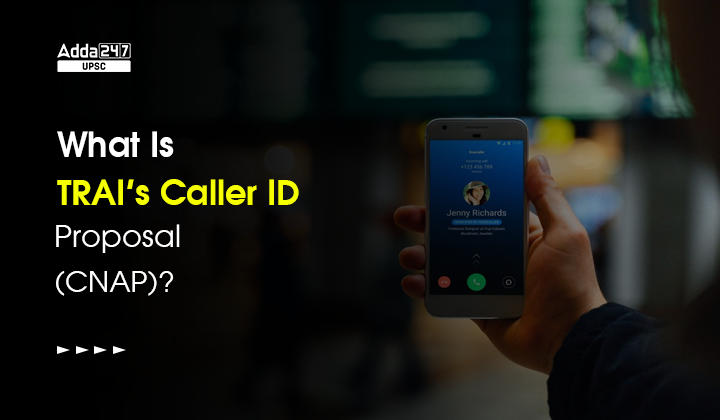Table of Contents
Brief Intro About TRAI’s Caller ID Proposal(CNAP): TRAI’s Caller ID Proposal(CNAP) forms a major component of the draft Telecom Bill 2022. The Centre, in this bill, has made a provision that makes it mandatory for telecom services providers to ensure that the name and identity of their subscribers are displayed while calling another individual. TRAI’s Caller ID Proposal(CNAP) works just as the Truecaller app displays the names of people calling.
Draft Indian Telecom Bill, 2022
Context
- In News:
- Telecom operators and tech companies have expressed concerns over a proposal to make it mandatory for them to display caller ID or calling name presentation (CNAP) across telecommunication network.
- However, consumer protection groups, Internet Service Providers Association, etc. supported TRAI’s Caller ID Proposal(CNAP).
- Background:
- Earlier, In November 2022, the Telecom Regulatory Authority of India (TRAI) released industry comments on the consultation paper on the mandatory introduction of Caller ID Proposal(CNAP) in telecommunication networks.
What Are CNAP And CLI?
- What Is CNAP? The CNAP is the supplementary service which enables the called party to receive the calling name information of the calling party. This supplementary service provides the ability to indicate the name information of the calling party to the called party at call set-up time for all incoming calls.
- What Is CLI? Presently, in Indian Telecom Networks, only the mobile/landline numbers are being displayed as Calling Line Identification (CLI) during incoming calls. There is no mandate in the license for providing CNAP services.
TRAI’s Proposed CNAP Models
There are 4 Proposed CNAP Models BY TRAI:
- TSPs operating CNAP database Model:
-
- This involves each telecom service provider (TSP) establishing and operating a CNAP database of its subscribers.
- Here, the caller’s TSP would have to extract the relevant data from its own database.
2. Database sharing Model :
-
- In this model, the operator of the calling entity shares its CNAP database with the receiver’s operator.
- The difference here is that the calling operator would permit the receiver’s operator to access its database for the caller’s CNAP data.
3. Creating a Centralised Database Model:
-
- The onus rests on the receiver’s operator to delve into the centralized database to retrieve and present the caller’s data.
- This model is similar to a plan envisaged by the Department of Telecommunications (DoT) in 2018, involving the setting up of a Digital Intelligence Unit at the central level.
4. Centralized CNAP Database Model:
-
- In This Model TSP retains a copy of a synchronized central database operated by a third party.
- It works this way: the call is facilitated as per the routine procedure, and since the receiver’s operator has access to both the centralized and their own database, the lookup is, therefore, internal.
Why Some Companies Are Opposing TRAI’s Caller ID Proposal(CNAP)?
- Most companies and operators that took part in consultations have said that this cannot be implemented due to privacy reasons, technological limitations, consumer consent, etc.
- Cellular Operators Association of India, which represents the Indian telecom operators, said the implementation of CNAP should not be mandatory and should be kept optional for the TSPs.
- Bharti Airtel while agreeing that there is a case for making caller ID mandatory for telemarketers, disagreed to the idea of mandatory implementation of CNAP for the general telecom subscriber.
- Internet Freedom Foundation (IFF), a civil society organisation, was of the view that the CNAP system must be an opt-in service and must require individual consent.
What Should Be Done?
- Third-party apps like ‘Truecaller’ and ‘Bharat Caller ID & Anti-spam’ also provide calling party name identification and spam identification facilities. The native smartphone tools and thirdparty apps, generally, provide name identification services based on crowd-sourced data. However, the crowd-sourced name identity information may not be reliable, in many instances. So, moving forward on TRAI’s Caller ID Proposal (CNAP) will be a people friendly step.
Know About TRAI
|
Telecom Regulatory Authority of India (TRAI) | Decision Making, Functions, and Key Powers



 TSPSC Group 1 Question Paper 2024, Downl...
TSPSC Group 1 Question Paper 2024, Downl...
 TSPSC Group 1 Answer key 2024 Out, Downl...
TSPSC Group 1 Answer key 2024 Out, Downl...
 UPSC Prelims 2024 Question Paper, Downlo...
UPSC Prelims 2024 Question Paper, Downlo...
